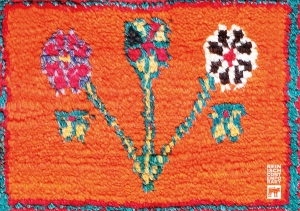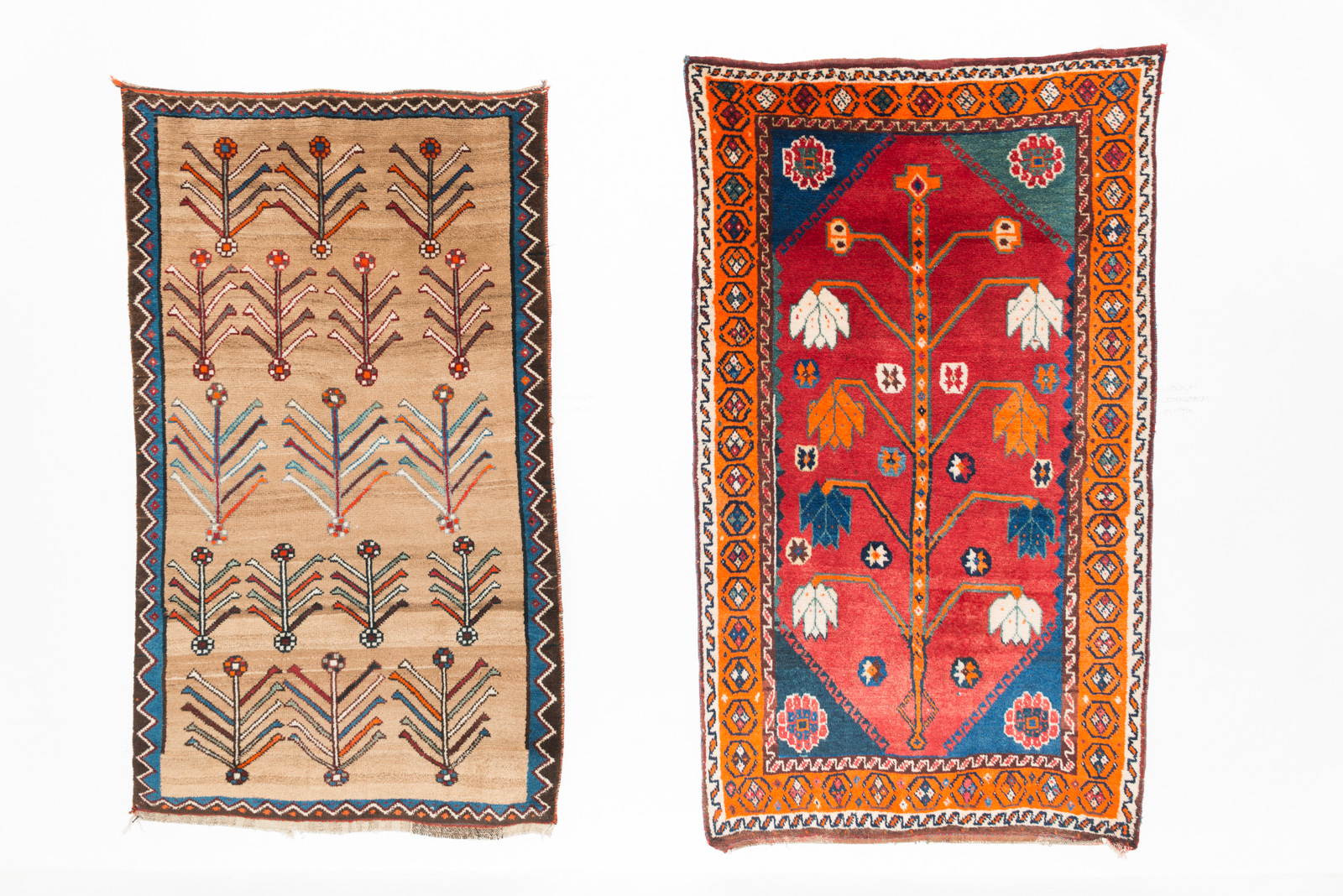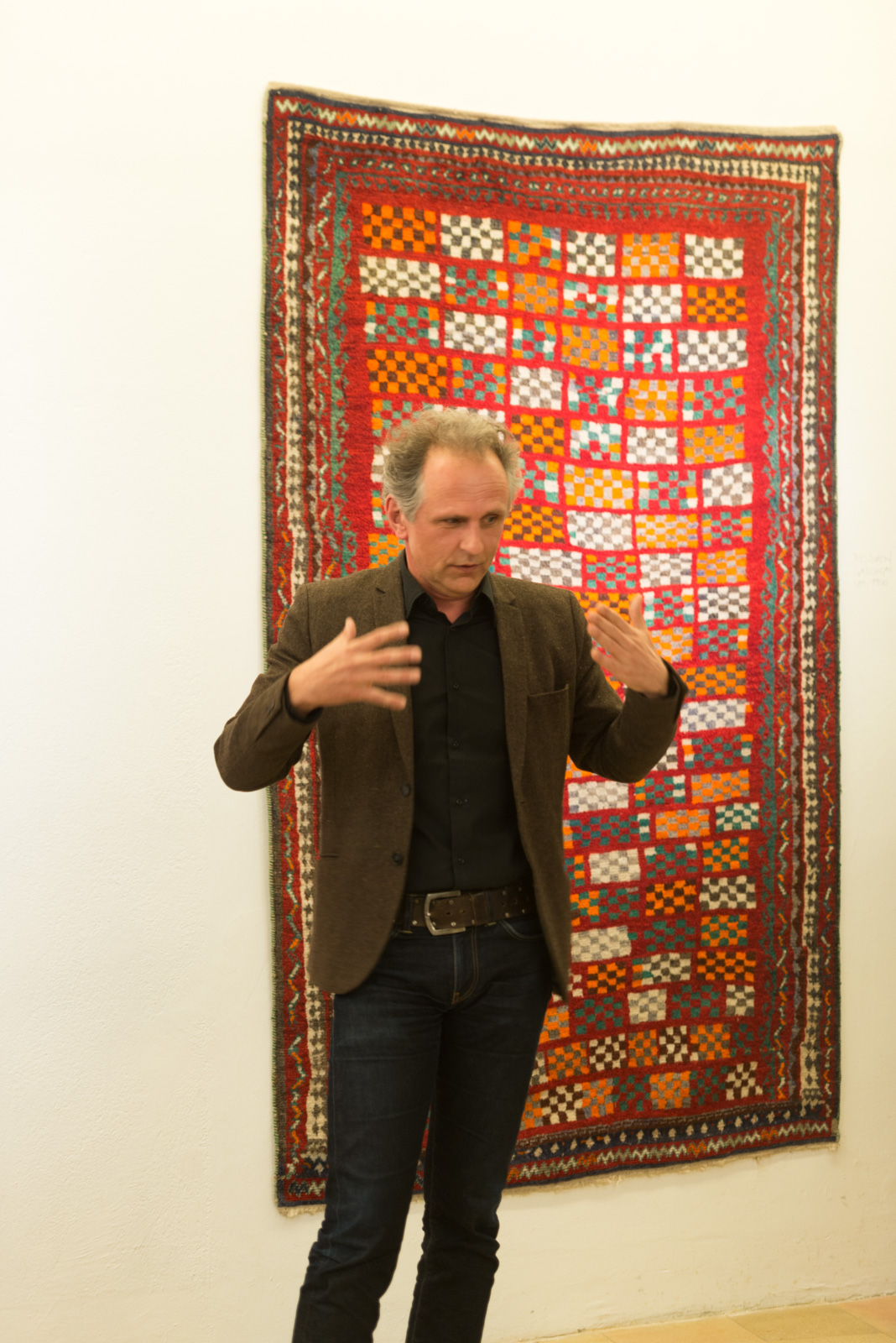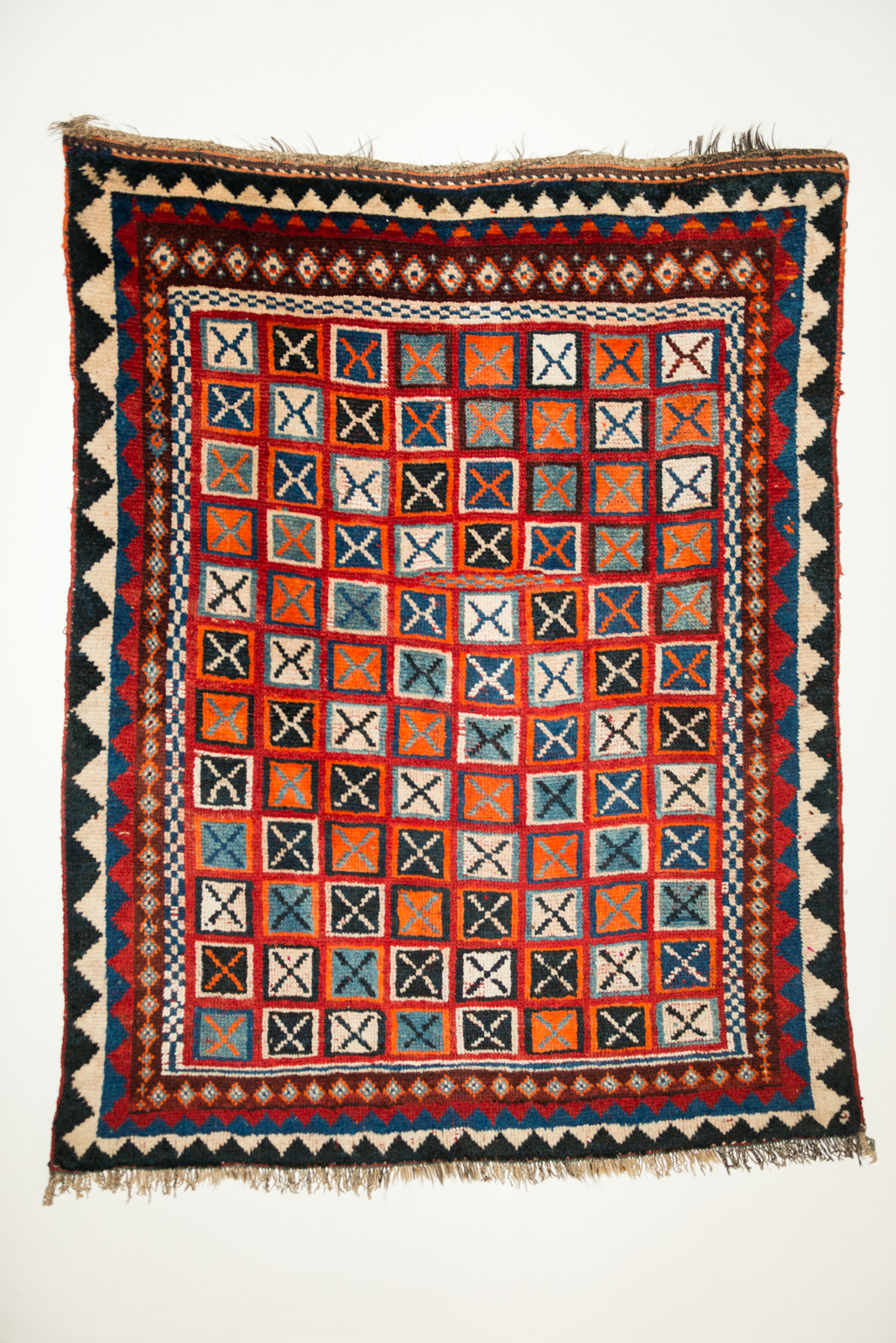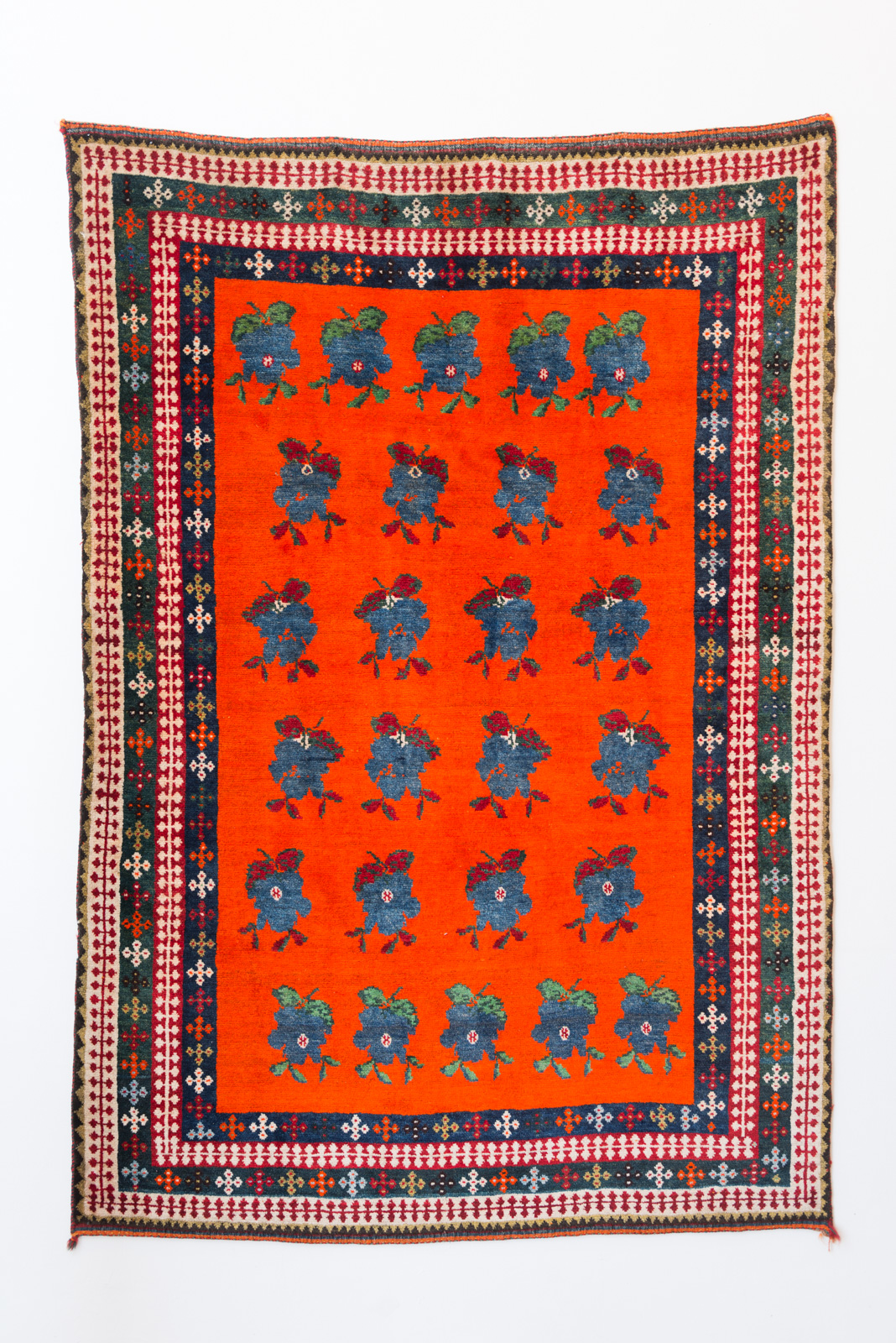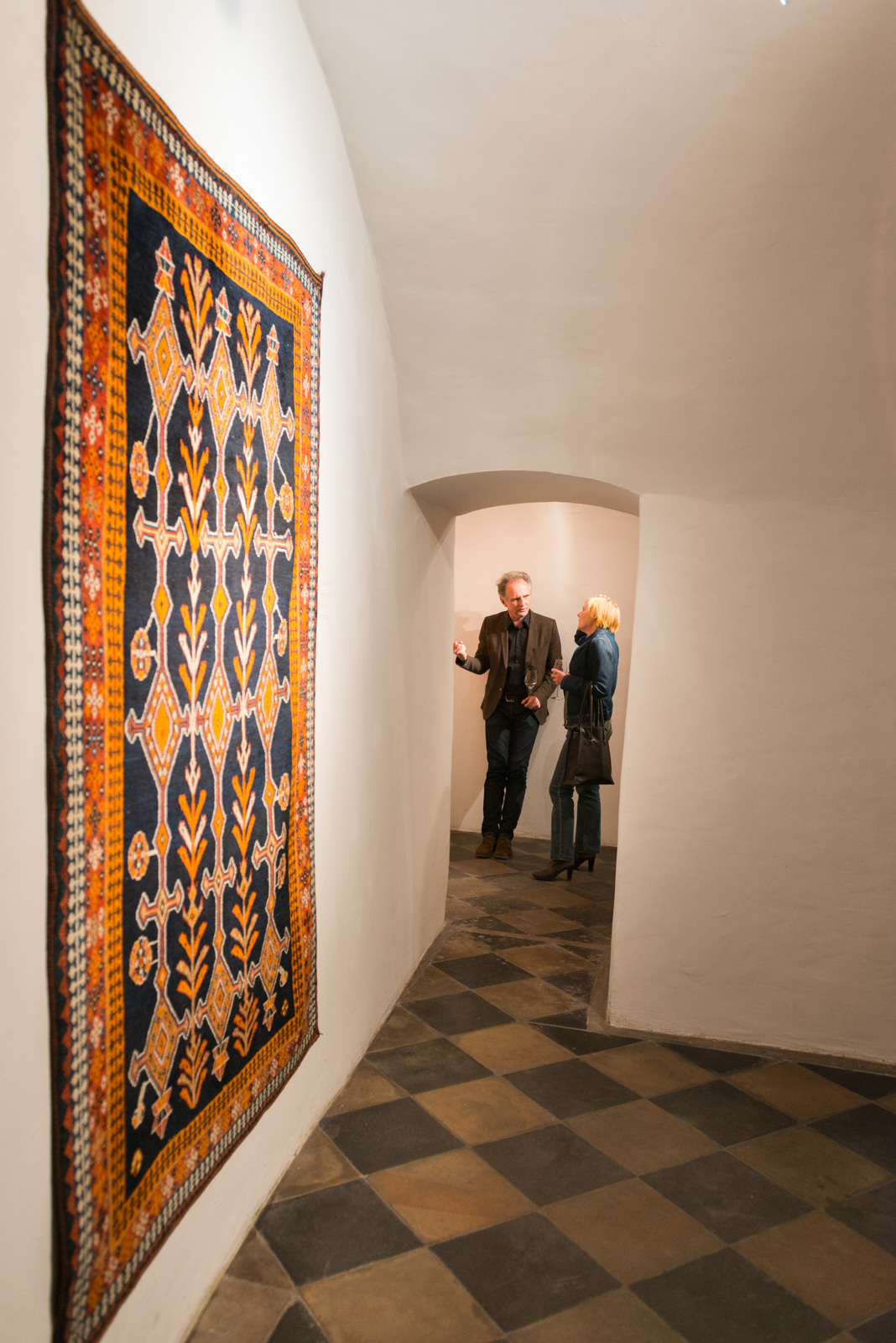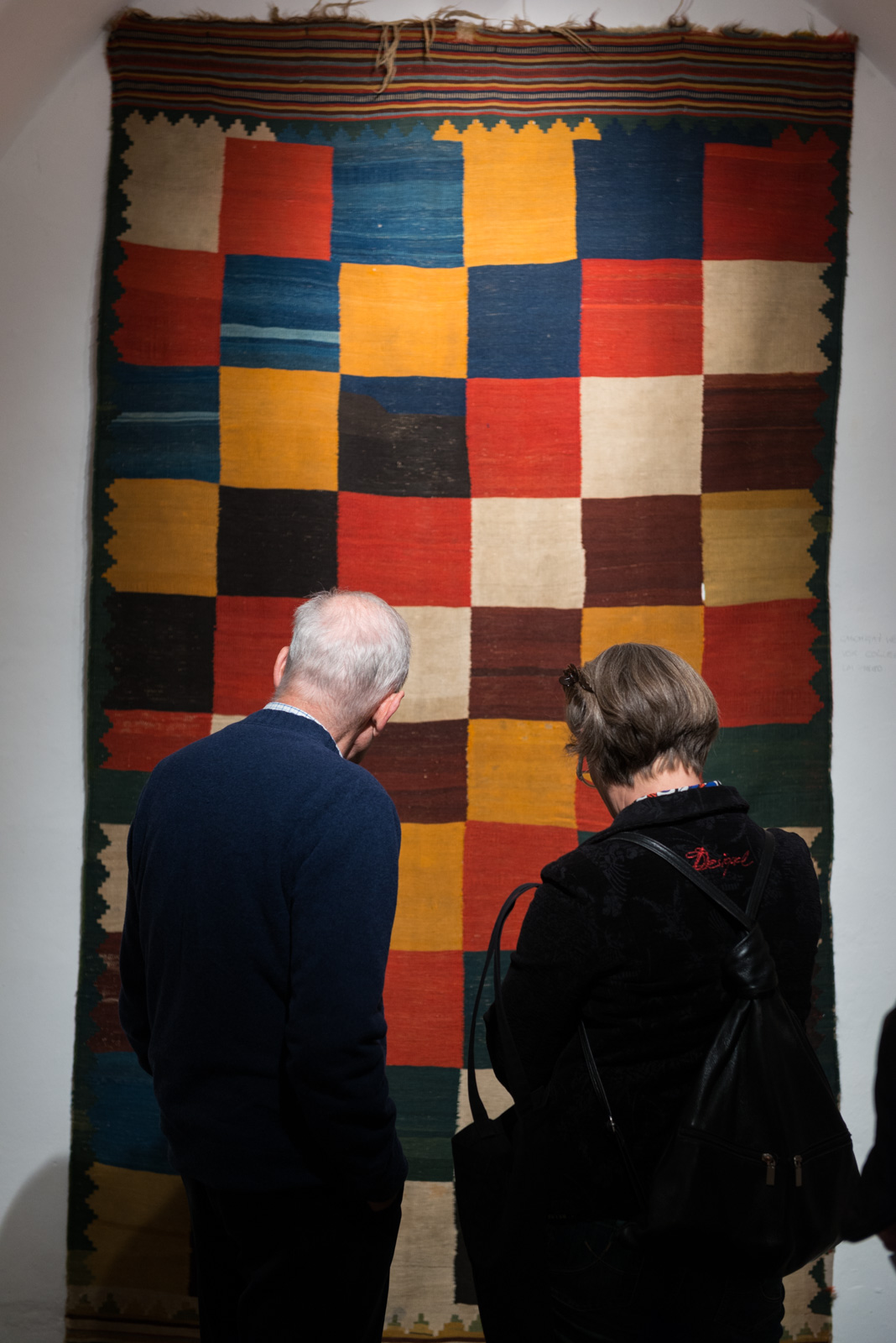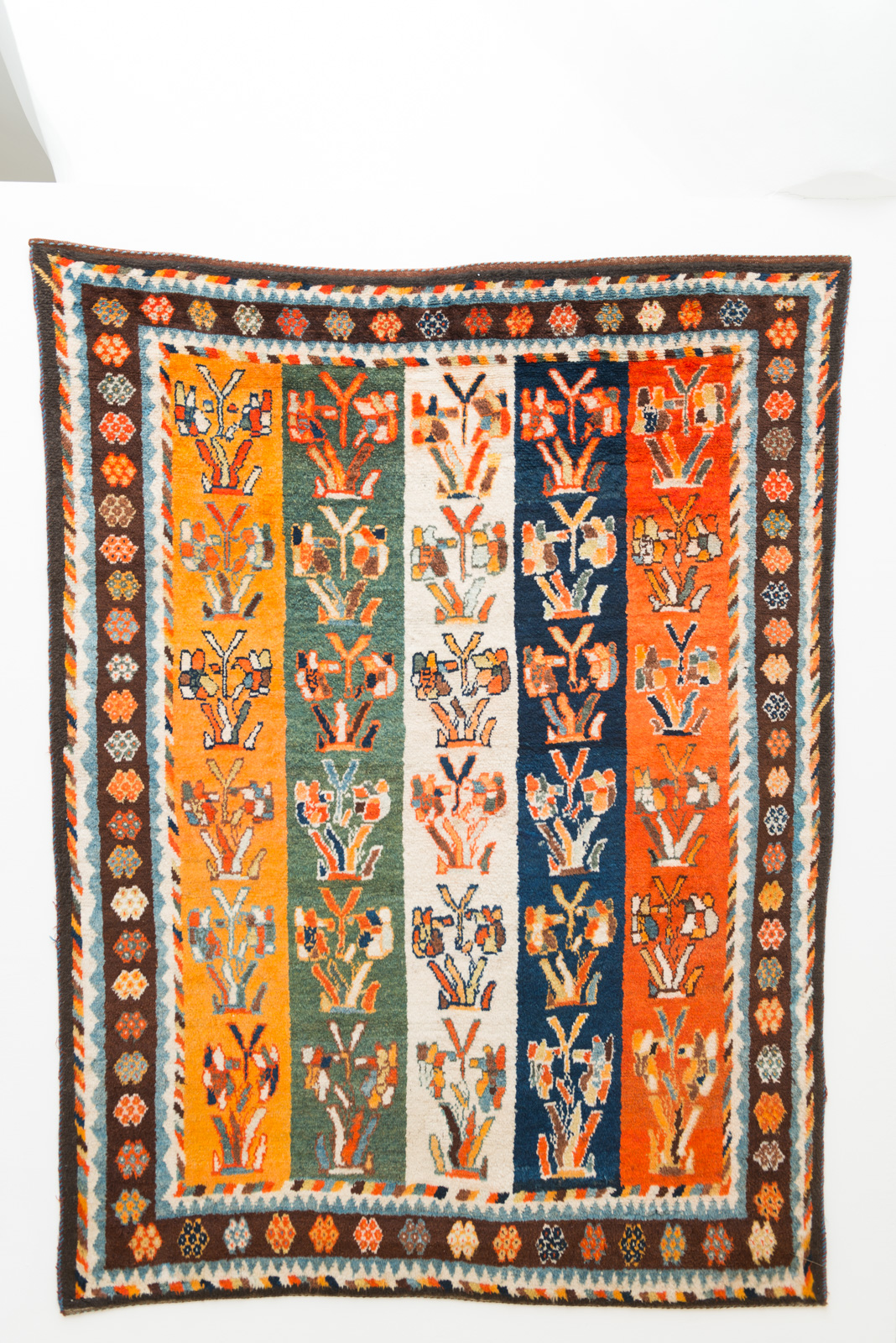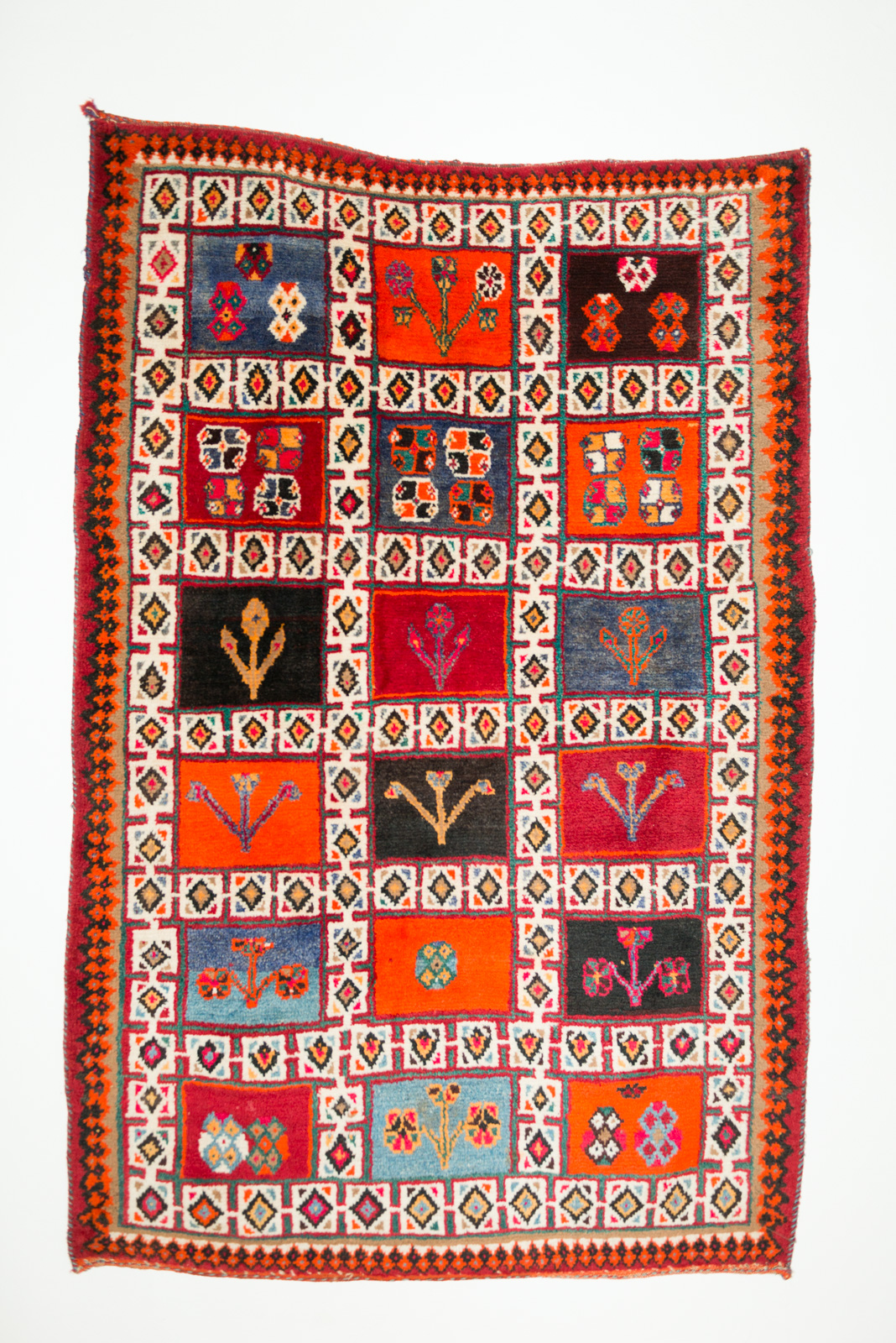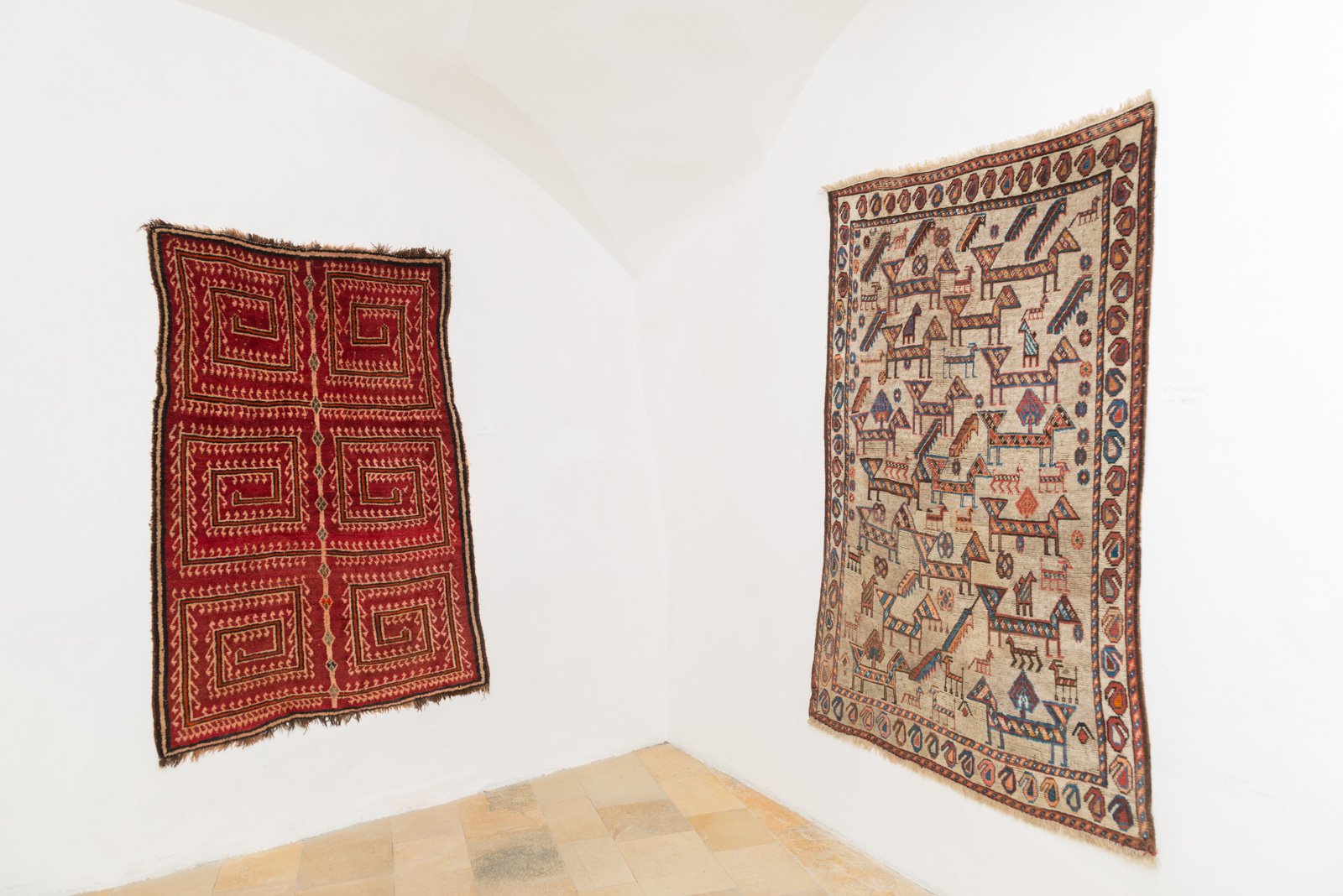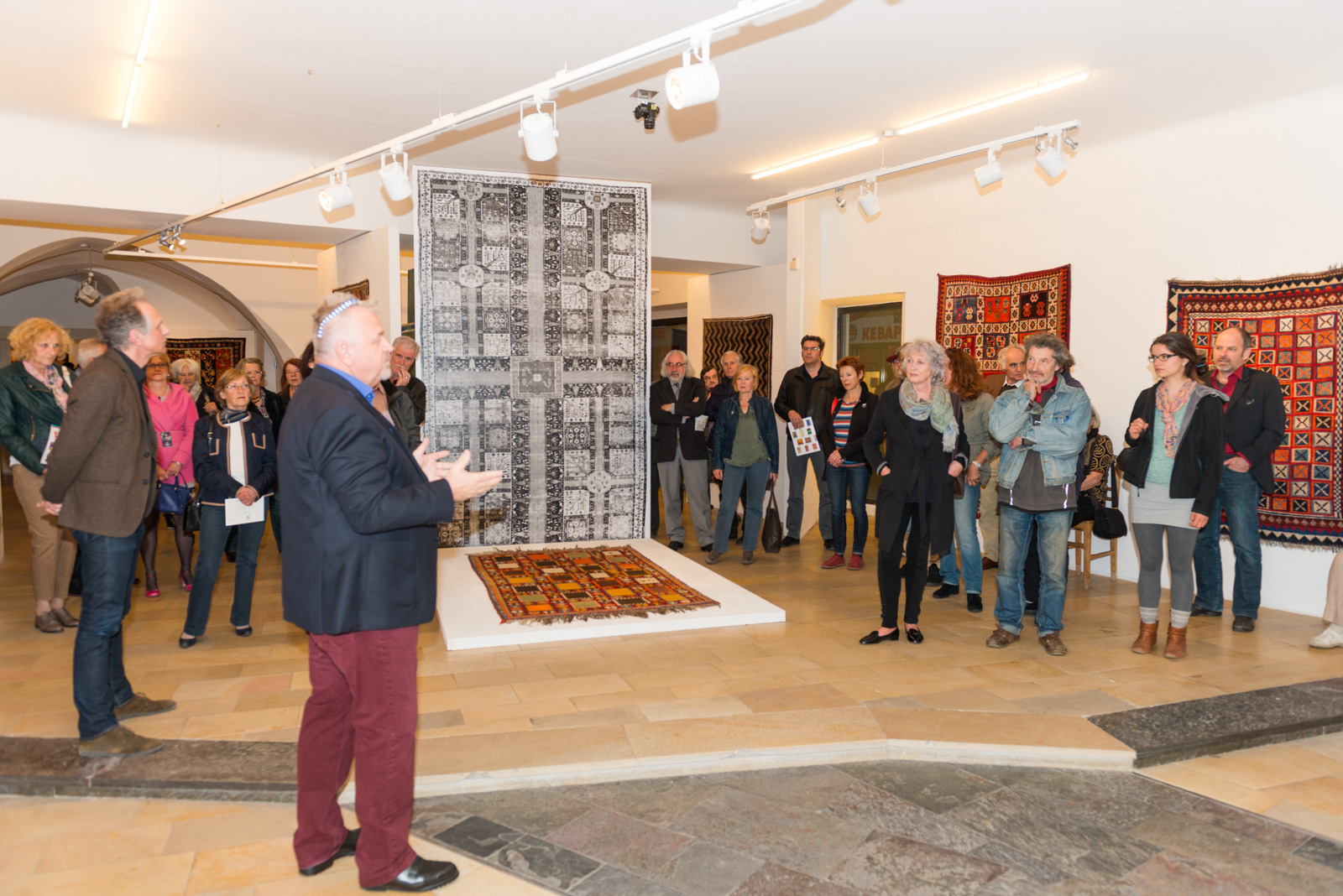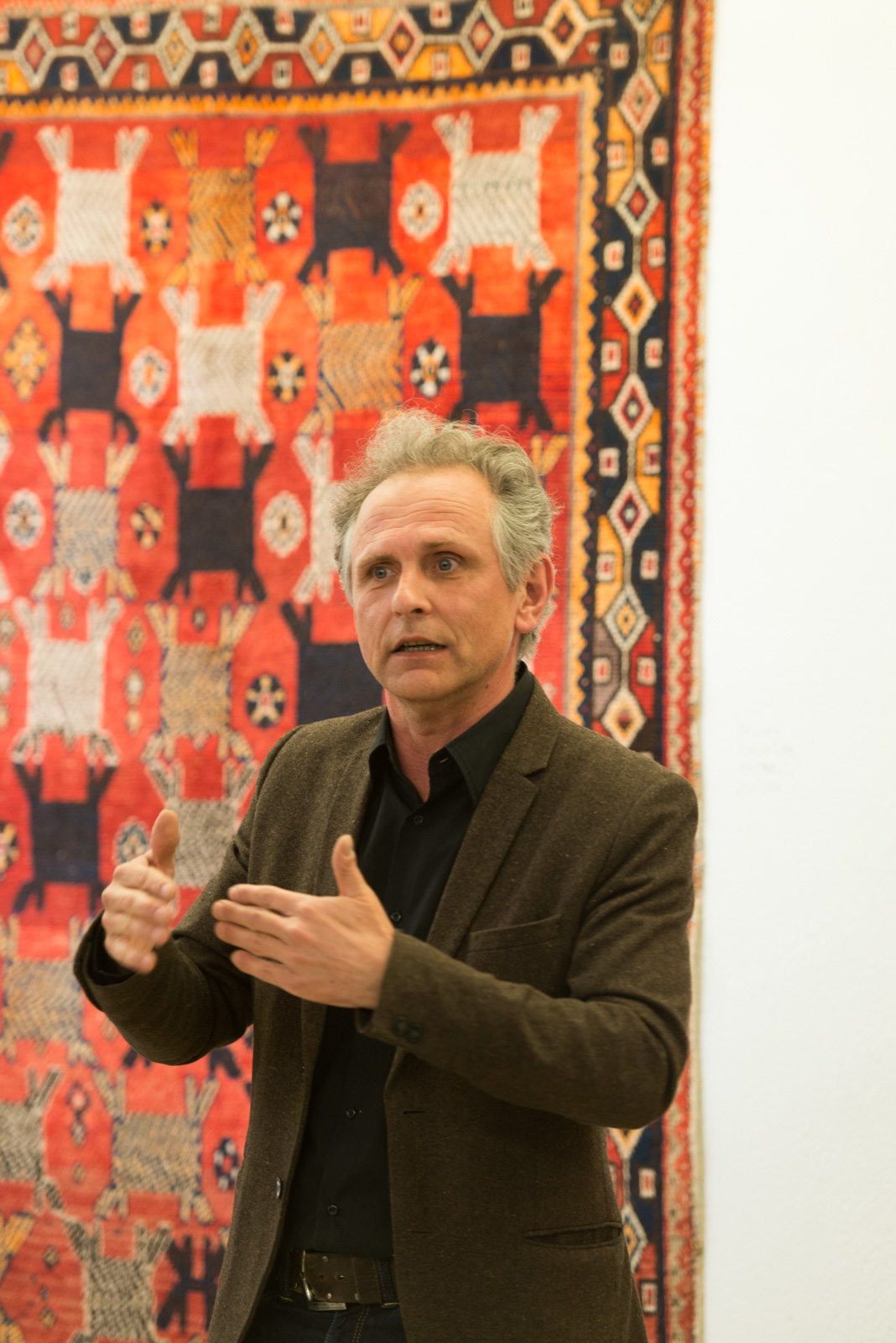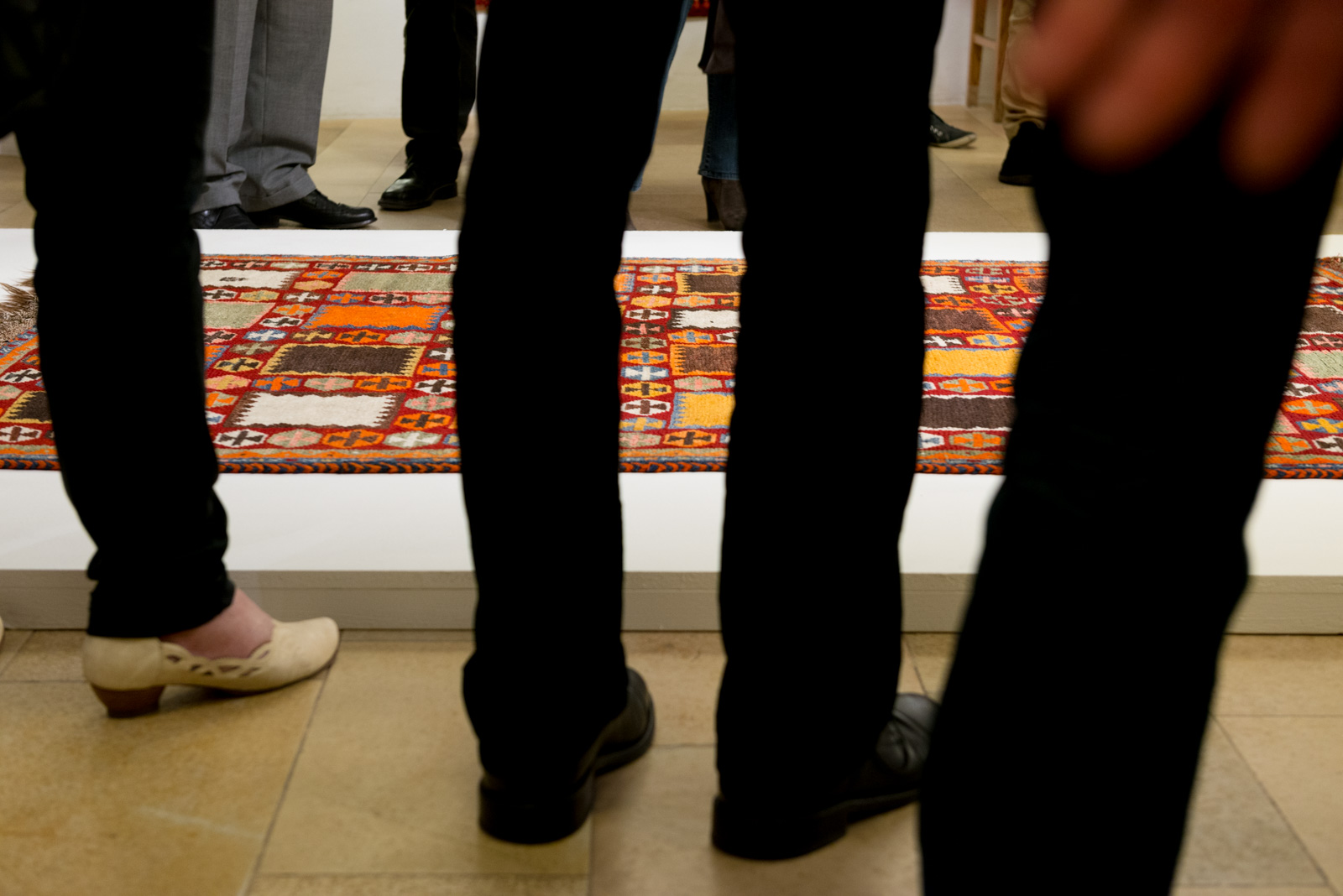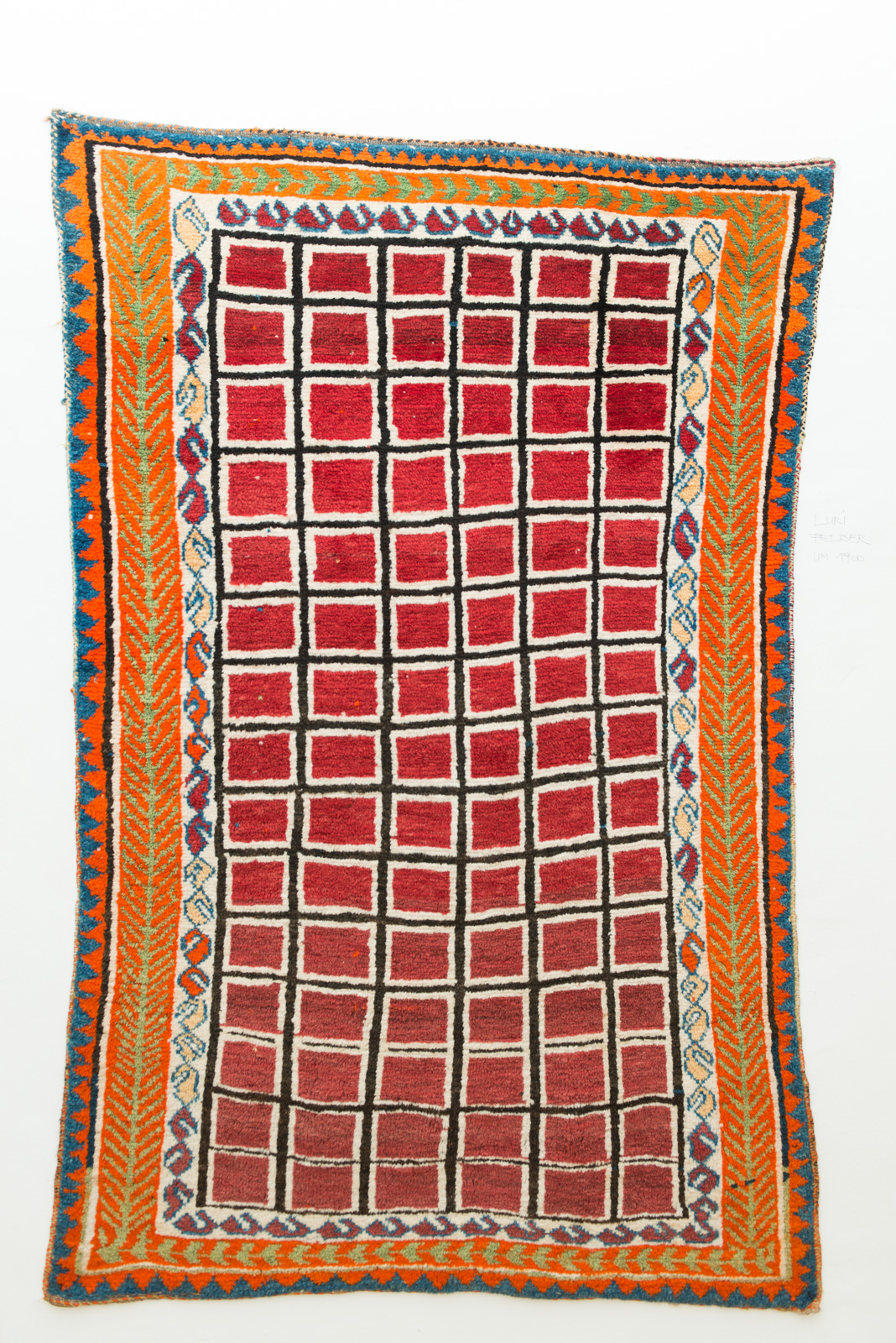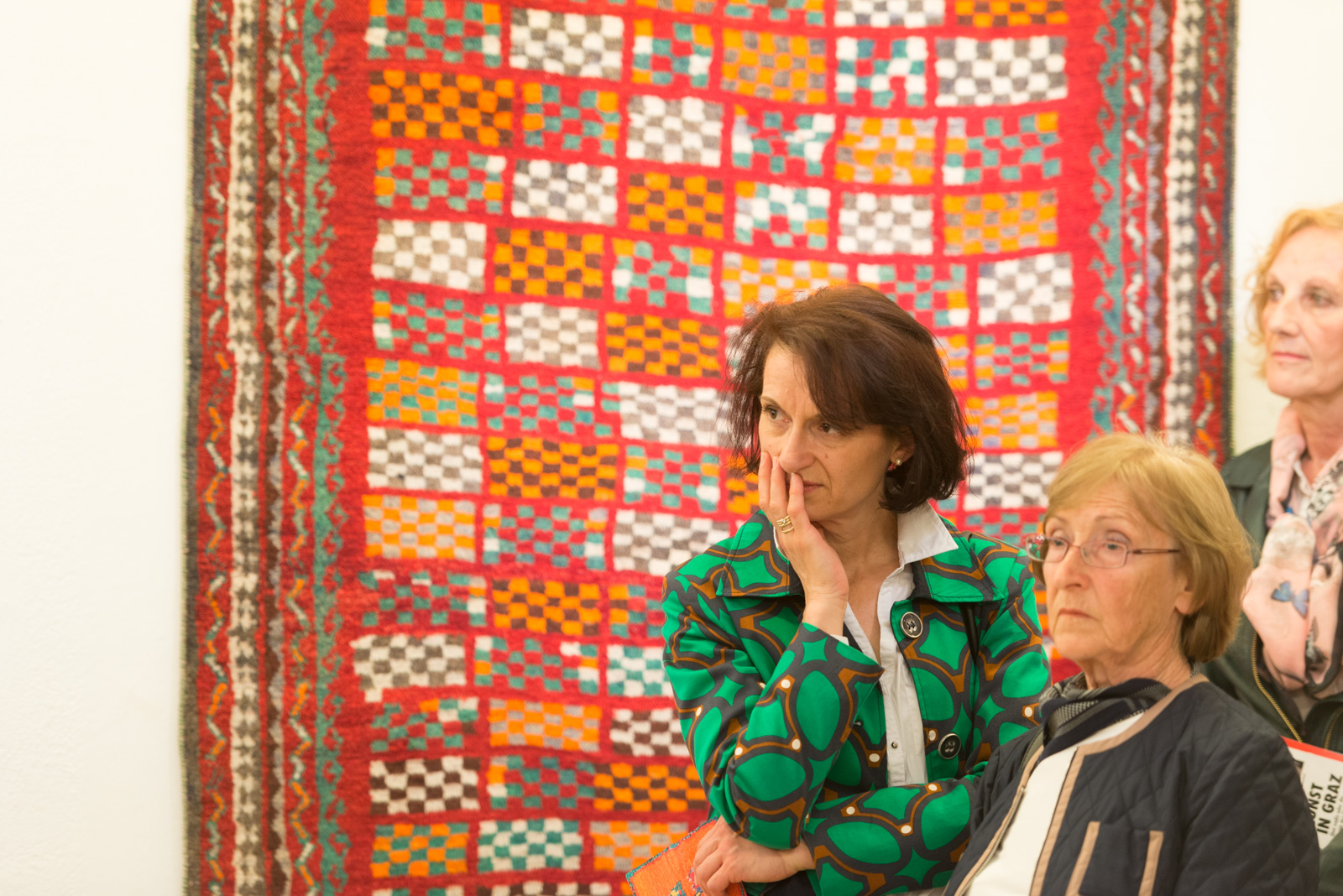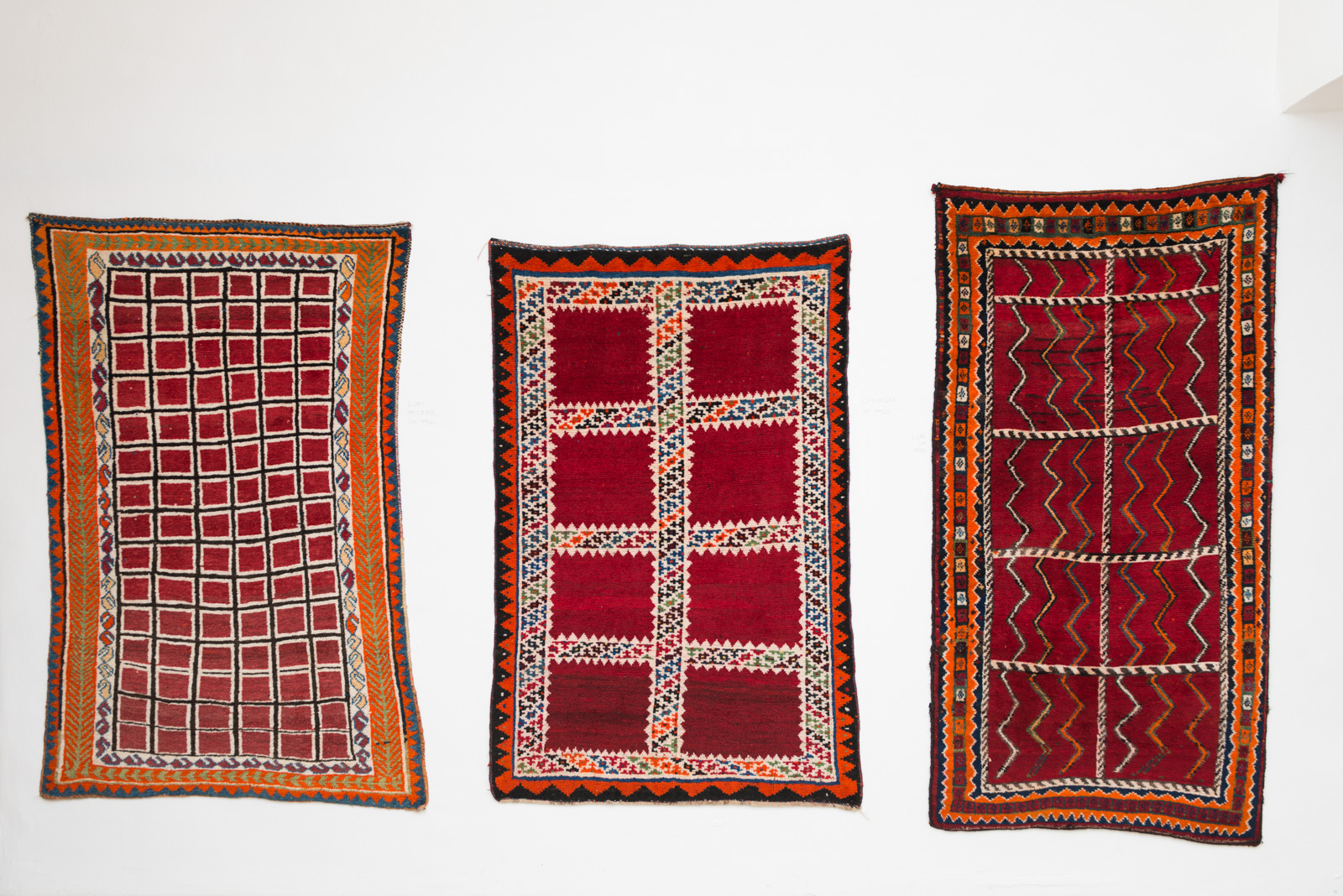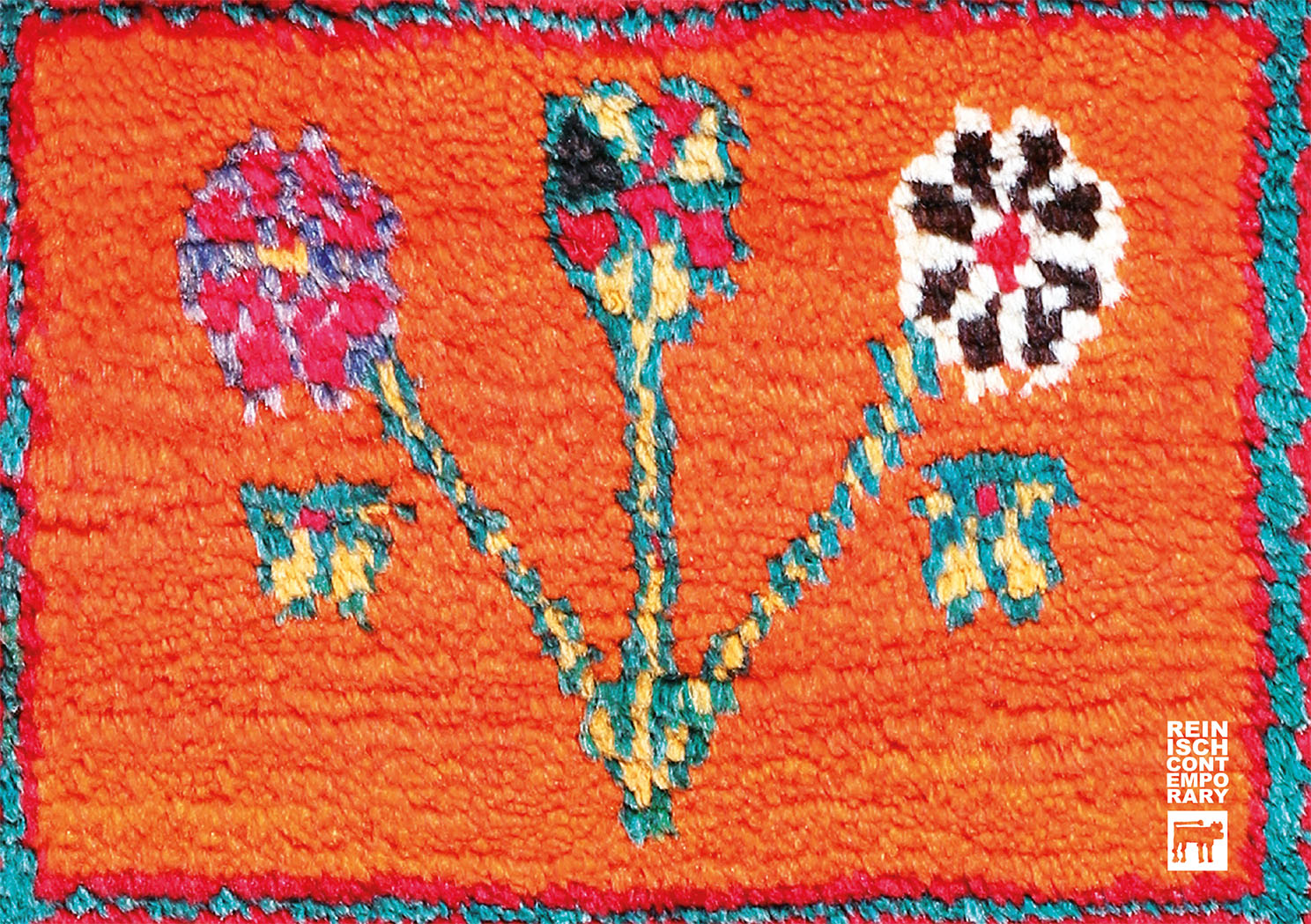14th of April – 6th of May
The garden metaphor is one of the central topoi of the Oriental rug. Material livelihood and the promise of paradise fuse and condense into notions of nature and paradise; in the garden. The rug’s multiple functional contexts let us perceive it as both an object of daily use as well as of decoration, as image or as a symbol of cosmological order. The ‘special place’ designated by a carpet is a sign of the relationship between humans and nature or Creation. The geography of carpet cultures is marked by the barrenness of landscapes. The contrast between fertile, lush oases and life threatening, monotonous deserts and steppes, as well as the impassable mountainous zones, is an essential force, which determines the lives and thoughts of people there.
As an expression of anthropocentricity, nature, or rather landscape, becomes a carpet. Carpets in living spaces are akin to humans turning landscapes into a manageable reality. The barrenness of the landscape turns the carpet into an emblem of vitality. The Quran describes gardens as a sign of divine action, as a ‘vivification of dead soil’ – a special place, like the carpet.
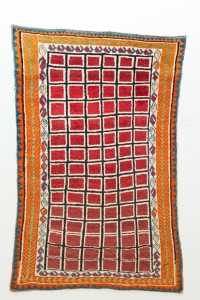 The traditional Persian garden, which dates back to pre-Islamic antiquity, has spread all over the Islamic world. It is essentially a rectangular site with waterways divided into four or more sections or beds. In the middle of the site, depending on the size of the garden, lies a pavilion or a platform from where one can survey the plants and sink into contemplation. That the carpet lends itself to imagery of gardens or of paradise is self-evident: knotting and weaving, as well as the laying down of the carpet, are symbolic for the act of creation. ‘Garden carpets’ and ‘paradise carpets’ are fixed patterns, which have always codetermined carpet culture.
The traditional Persian garden, which dates back to pre-Islamic antiquity, has spread all over the Islamic world. It is essentially a rectangular site with waterways divided into four or more sections or beds. In the middle of the site, depending on the size of the garden, lies a pavilion or a platform from where one can survey the plants and sink into contemplation. That the carpet lends itself to imagery of gardens or of paradise is self-evident: knotting and weaving, as well as the laying down of the carpet, are symbolic for the act of creation. ‘Garden carpets’ and ‘paradise carpets’ are fixed patterns, which have always codetermined carpet culture.
In this exhibition, Reinisch Contemporary follows the development of the connection between nature, landscape, paradise and garden with carpets and exemplifies this in a presentation of selected Iranian nomadic rugs. These ‘Gabbehs’, originating from the province of Fars and produced purely for personal use, captivate with their sweeping abstraction and intensive colouring. Symbols and patterns trace their roots back to the shamanistic pre-Islamic era. Vitality and growth are often seen as synonymous with gardens in this context. A geometrical basic structure echoes waterways and flowerbeds in schematic forms. In nomad tents, carpets thus play a primary role. In the absence of fixed walls and floors it creates a place of quietude, protects from view and climatic variability and transports an artificial interference with the notion of nature.
Western-occidental culture also subjugates nature to a process of condensation, namely abstraction and stylisation. From landscape painting via land art to environmental art, one can detect a twofold development: on the one hand, image-formation of nature and, on the other, the human need to be creative – to equal Creation. Both share the construction of a reality that bundles and compacts laws of nature, cosmological concepts and religious beliefs.
Günther Holler-Schuster
